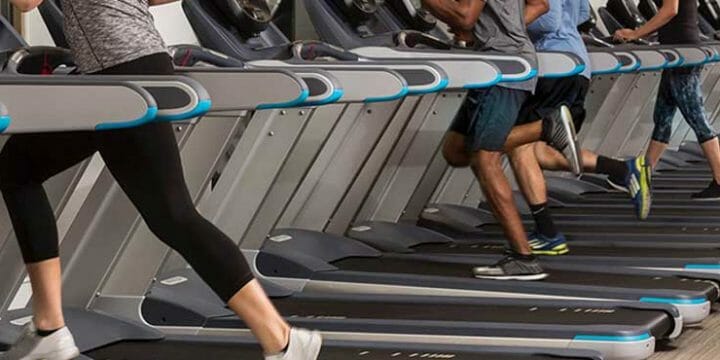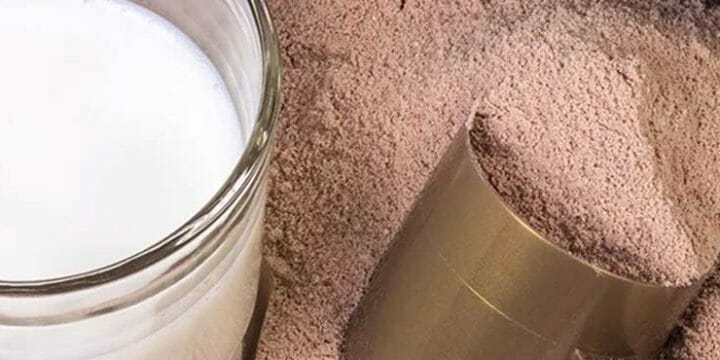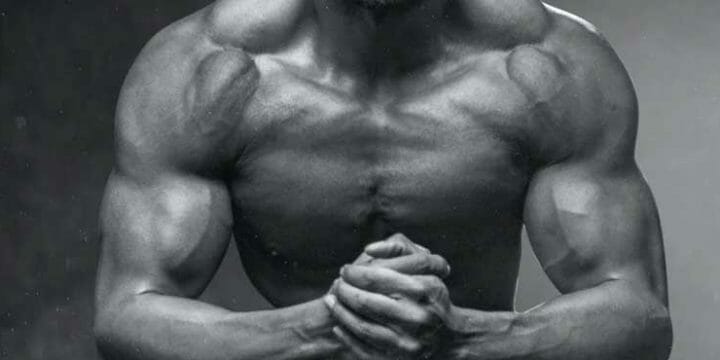I’ve often heard people talk about the pros and cons of doing cardio after leg day, but those conversations rarely look at facts or studies.
Some say you need to let the muscle soreness do its job after leg workouts, while others think that cardio is the best way to speed up your recovery after strength training.
It’s the perfect conversation for added confusion.
While our team does believe in doing some cardio after training your legs, there are a few things you need to understand to avoid making some common and often painful mistakes.
Quick Summary
- You can do cardio after leg day provided you reduce the intensity of cardio, plan cooldown cardio, take protein shakes, and stretch your muscles.
- The best cardio workouts after leg day range from swimming, rowing, running, elliptical, and cycling.
- Research from the National Library of Medicine shows that moderate-intensity aerobic recovery can reduce pain levels from 4.83 to 1.13 and improve strength recovery within 72 to 96 hours post-exercise in cases of delayed onset muscle soreness (DOMS).
- In my view, considering the balance between recovery and continuous training, incorporating light cardio after leg day seems like a practical approach to enhance muscle recovery and maintain overall fitness momentum.
The ‘Cardio After Leg Day’ Dilemma
There are two main issues when it comes to the cardio after leg day debate.
Both are valid points, but it’s important to understand what happens during recovery and what your body is telling.
Not All Muscle Pain Is The Same
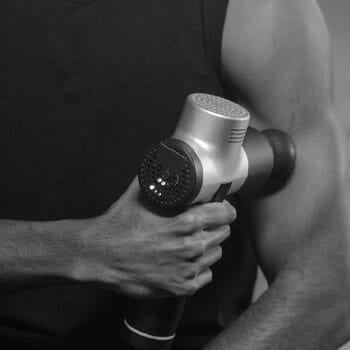
When you finish a weight training session, your muscles will have occasionally burned from the build-up of lactic acid. That’s temporary pain and will go away after a few seconds.
Then there’s what I like to call the jelly effect once you’re done, and the muscles in your legs feel like they can barely carry you. This is mainly down to low glycogen stores.
And finally, there’s delayed onset muscle soreness (DOMS), which usually sets in after one or two days.
And depending on how hard you trained, this can give you the robocop effect where you feel like you can’t bend your limbs.
DOMS Can Delay Your Workout Routines
Keep in mind that your legs are a muscle group that you need to use in most cardio sessions. That’s why so many people think that it’s not a good idea as you might cause more soreness or injury.
Now, if you can barely get your socks on the next morning, then some types of cardio might be less favorable.
I’ll get to that shortly.
The Arguments in Favor

We’ve always been in favor of cardio after leg day or any other high-intensity resistance training day. But it wasn’t until we spoke with a few physios and looked up some research papers that we got some more definitive evidence.
Here are the three best reasons in favor of it.
Recovery Time
DOMS can be a real pain in the backside and everywhere else.
But it’s a natural reaction to leg training, and it’s in part what triggers muscle growth.
The pain comes from muscle fibers tearing which makes your muscles feel like they are constantly stiff.
That stiffness has a downside in the form of reduced blood flow, which means fewer nutrients get to the muscles to help them repair.
A study from the National Library of Medicine (NLM) has shown that recovery times from DOMS are lower by strategically planning some cardio [1].
Performance
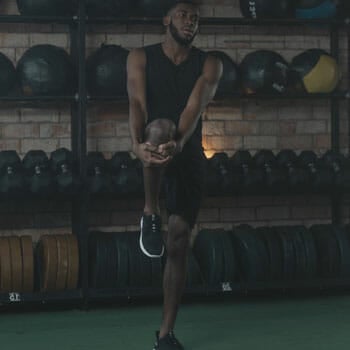
Most beginners to gym training will know how bad DOMS can become where you simply move all your limbs in slow motion.
But even bodybuilders with some years under their belts will occasionally get some pretty bad DOMS, especially during bulking phases.
The problem is that the pain can limit your range of motion and overall ability to lift, do bodyweight squats, or leg presses.
As a result, according to the National Institute of Health (NIH), you could impact your workout schedule while you’re waiting to see your leg strength return [2].
Lean Muscle Mass
Ultimately, you’re putting all this effort into training to make different muscle groups stand out more. But your weight training won’t get rid of much excess fat reserves.
That’s why cardio can become a huge asset after your leg day. It’ll help your body burn off more fat to better show off those muscle groups.
Even 20 minutes of low-intensity cardio can burn off a few more grams of fat each time, and that all adds up to leaner-looking muscle tissue.
Related Articles:
The Arguments Against

So, we’ve covered the benefits, but we also want to highlight a few arguments against doing cardio after a tough strength training leg day.
The reasons here mainly apply to beginners or anyone that might be suffering some particularly bad delayed onset muscle soreness.
Injury
When your muscles are particularly stiff after a leg day, then you could end up with a higher risk of injury if you add more strain to your lower body.
I’ve had some clients that could barely walk because they pushed things too far, and it would simply not be a good idea to get on a treadmill or elliptical.
There are still some alternatives like swimming, but there are certain situations where you might just need to give your body some rest and consider if you pushed yourself too far on the leg day.
Motivation

A cardio session should be relatively easy to get through, especially when it’s aimed to help recover from a leg day.
If you end up struggling because of excessive pain in your legs, then that can be very demotivating.
One way to work around this is by doing some cardio where you can reduce the strain on your legs, like rowing or swimming.
The Best Cardio Workout Choices
Cardio after leg day should give you some flexibility when it comes to how much strain you put on your lower body.
These are the types of cardio we suggest in an order suitable from very sore legs to moderate soreness.
1. Swimming
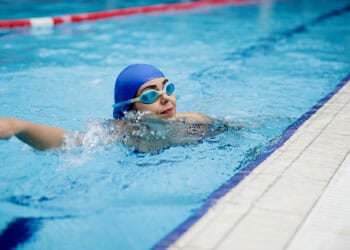
The great thing with swimming is that there is less pressure on joints and ligaments, and if your leg muscles are very sore, then you can reduce how much work your legs do.
In fact, just using your arms can be a great cardio option as it will increase your heart rate quite a bit more.
2. Rowing

If you look at competitive rowers, then you’ll notice big shoulder and leg muscles.
But when you get on a rowing machine, you can adjust your technique for it to become less of a leg workout.
Simply bend your knees less and make your upper body do more of the work.
As you feel your legs becoming less sore from increased blood circulation, you can then gradually increase how much they work.
Related: 10 Best Magnetic Rowing Machines
3. Elliptical
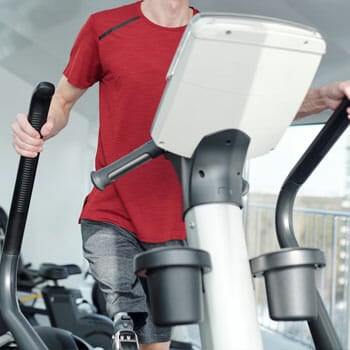
Elliptical machines are great for reducing the strain and pressure on joints and tendons while still giving you a running or climbing motion.
Start at the lowest intensity setting and an almost strolling speed.
That way, you can assess how the muscles in your legs react to the exercise before you start speeding up.
Don’t get carried away. Although ellipticals burn belly fat, this should still be light cardio that doesn’t make your muscles burn like on leg day.
Related: 10 Best Budget Elliptical Machines
4. Running

If you don’t want to go to the gym after a tough leg day, and if you’ve only got low to moderate pain from the leg workout, then going for a 30-minute run is a good option.
Just plan your route carefully as you want to avoid lots of uphill sections where the intensity levels would increase too much.
5. Cycling
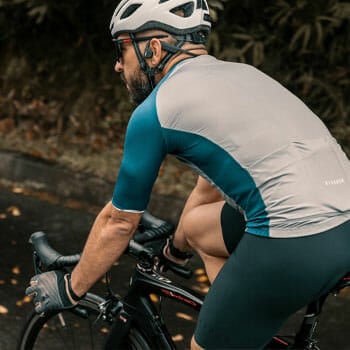
This should be a last resort, and I wouldn’t suggest it for any significant levels of DOMS.
While it is a great low-impact way to increase your blood flow, it does rely heavily on the muscles you might have pushed too far on leg day.
I would also say that it depends on how much of a comfortable range of motion you have, as your position on the bike forces you to bend your knees quite a bit.
How to Get Optimal Results

The final piece of the puzzle to getting the most out of your leg workout and cardio comes down to these five suggestions we give all of our clients.
1. Reduce The Intensity Of Cardio
Only ever do moderate-intensity cardio after a high-intensity weight training session.
You don’t need to push yourself after already exercising to your limits.
2. Plan Cooldown Cardio
None of my clients are allowed to leave the gym after weight training without doing at least 10 minutes of cardio to cool down. It’s the best way to reduce DOMS after a leg workout.
The worst thing you can do is finish your last set, and with your heart still pumping, head for the shower. Bring your heart and muscles slowly back down to normal metabolic rates for better training results.
3. Take A Protein Shake After Cardio As Well
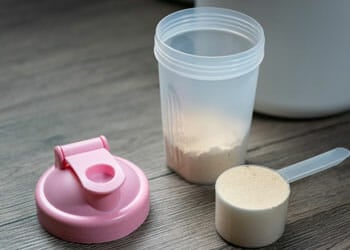
You should have taken a protein shake after your leg workout, but I would also suggest having one even after light cardio training 24 hours after your leg day.
That protein boost will keep feeding the ongoing muscle protein synthesis until the DOMS has been fully repaired.
4. Avoid Pain Medication
Post-workout muscle soreness can become painful and feel like your limbs are swelling. But I would advise against taking medication with the goal of working out harder in your next training session or cardio day.
Pain medication like anti-inflammatories will mask the pain, but you could end up pushing yourself further than your muscles are ready for.
As a result, you could do more damage than good.
5. Stretch And Massage The Muscles
You shouldn’t underestimate the power of doing some light foam roller massages and stretching your legs with a resistant band once you complete your workout.
I would also suggest you do this the following day after you complete your cardio routine. Studies from NIH have shown that you can reduce peak soreness in your muscle mass by massaging the areas [3].
And you don’t need to book in with a therapist, as a foam roller will work just fine.
6. Try Cold Therapy
Another way to get the most out of your workout is to try cold therapy. This type of therapy can help decrease muscle soreness and speed up the recovery process.
It is especially beneficial in case of injuries and swelling. Although taking ice baths is known to be very uncomfortable, it is also very effective in reducing inflammation.
Spending between 10 and 15 minutes in an ice bath will help you achieve optimal workout results. If you think this would be too uncomfortable, at least try to submerge the affected area.
Another solution is cryotherapy. This method involves spending a couple of minutes inside a chamber filled with liquid nitrogen, and the chamber gets extremely cold.
Unfortunately, it can get rather expensive, but it is very effective.
Comparison of Morning vs. Evening Cardio Post Leg Day
The timing of cardio after leg day, whether in the morning or evening, can influence muscle recovery and performance.
- Morning cardio, typically performed in a fasted state, may enhance fat oxidation but could stress muscles still recovering from leg day, potentially hindering muscle repair.
- Evening cardio allows more time for muscle recovery post-leg day, as the body has had ample time to replenish energy stores.
However, intense evening cardio might interfere with sleep quality, crucial for muscle repair. Ultimately, the best time depends on individual recovery rates, energy levels, and lifestyle.
FAQs
Is It Ok to Do Cardio and Weights on the Same Day?
Yes, it is OK to do cardio and weights on the same day. It’s also recommended to do some cooldown cardio after weight training to gradually slow down your heart rate and relax your muscles.
Is It Ok to Run After Leg Day?
Yes, it’s OK to run after a leg day as long as you avoid pushing yourself too far. If your leg muscles are very sore after your leg day, then it might be better to go swimming or to use a rowing machine to reduce the strain on the legs.
References:
- https://pubmed.ncbi.nlm.nih.gov/22739325/
- https://pubmed.ncbi.nlm.nih.gov/12617692/
- https://www.ncbi.nlm.nih.gov/pmc/articles/PMC1250256/
About The Author
You May Also Like


